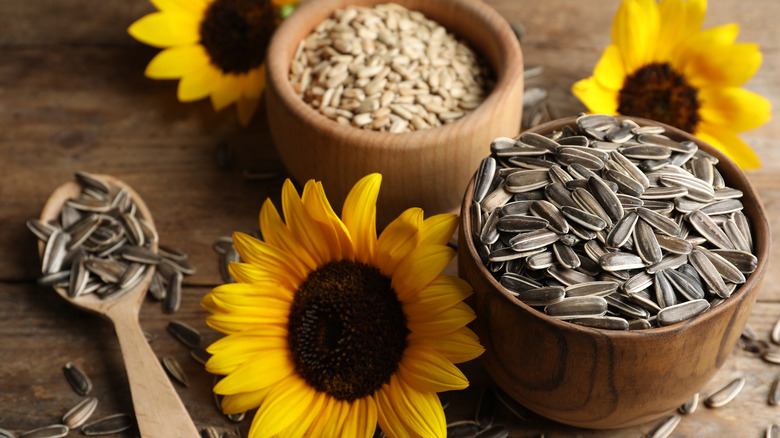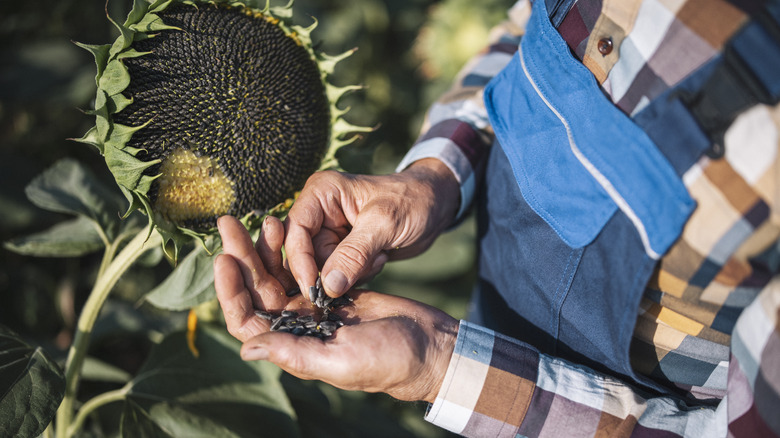What You Need To Know About Eating Sunflowers (Not Just The Seeds)
Sunflowers seeds aren't the only edible part of this brightly colored herb. Though sunflower seeds make excellent snacks for road trips, the petals, leaves, and stems of this commonly found specimen can also be eaten. Like other plants and flowers that can be plucked from your backyard and taken into your kitchen to wash and eat, sunflowers can add an interesting element to tonight's meal. And with so many vitamins and minerals, sunflowers may become an easy way of packing extra health-boosting benefits into the dishes you prepare.
Try including sunflowers in salads, mixing them with other fresh greens, or making a soothing tea at home. Because the petals of sunflowers can be bitter to taste, it is best to incorporate them with other ingredients or compensate with spices and oils for the flavors you prefer. The pretty yellow petals are perfect for cake decoration, and you can save the stalks, leaves, and any buds you don't use to eat later on.
Making the most of sunflowers
Before eating any sunflowers you've collected, it is best to ensure the herb is organically grown and does not contain any substances or pesticides that could potentially be harmful. Once you're certain the sunflower is clean, you can eat raw sunflower stalks as you might celery sticks and dip cut pieces into peanut butter or cream cheese. Or try preparing young sunflower buds like an artichoke, cooked until tender and flavored with salt, pepper, and oil.
Not sold on eating the plant? Begin by introducing the ingredient into your diet gradually — first by sprinkling sunflower seeds on top of dishes, then battering and frying leaves you've foraged. Sunflower butter can be smoothed on top of toasted pieces of bread and topped with drizzles of honey and cinnamon sprinkles to enjoy as a snack or morning meal. As always, when introducing new food items into your diet, allow time to observe for any unexpected allergies before incorporating the ingredient into other dishes.

